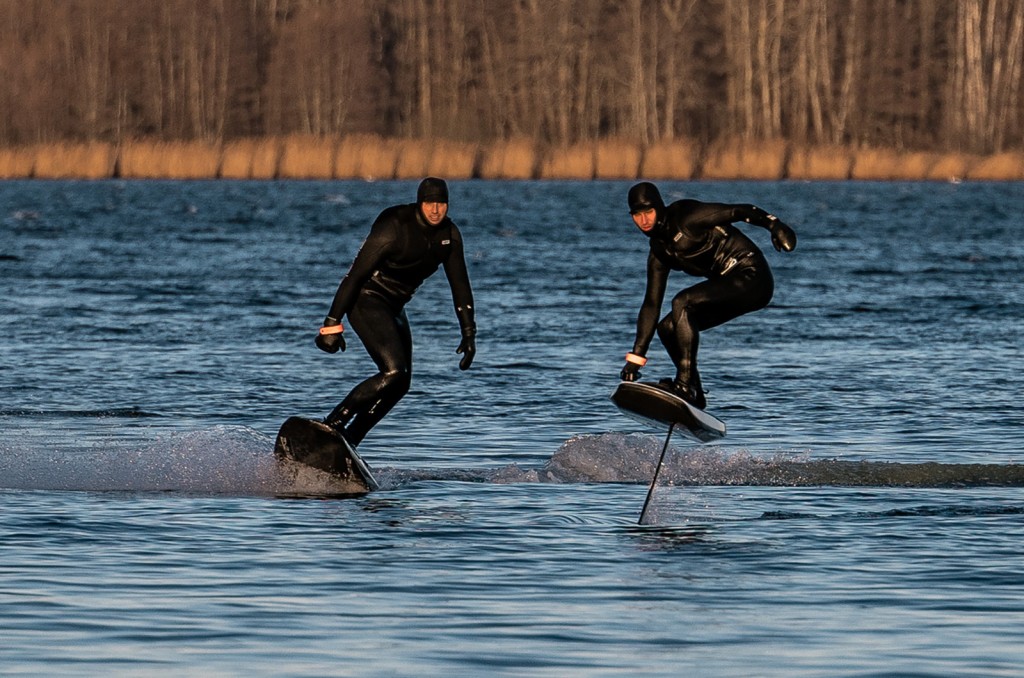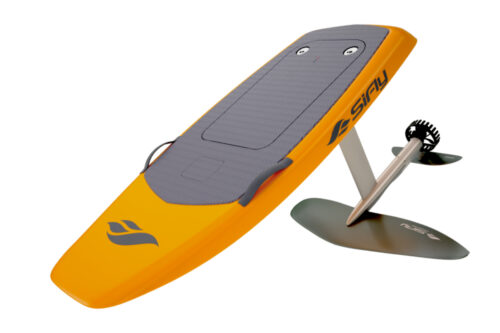The electric surfboard works best under specific circumstances. This is why it's so important to understand the specific conditions before using an electric surfboard. Here are some things that could affect your electric surfboard's performance. Conditions of the water- Electric boards perform best when there is calm water or water that is choppy. While they are able to be utilized in larger or more turbulent waves may make it difficult to control.
Battery Life- Depending on the use and conditions the battery's lifespan can be different. The battery will generally last longer when the user is less energetic and the water temperature is at a low level.
The weight of the rider can affect the performance and safety of an electric surfboard. Heavy riders will require more power to keep speed and control. This will drain the battery faster.
Skill Level- Those with more experience can make more out an electric surfingboard as compared to those just getting used to it. It takes time to get familiar with the board and learn the controls.
Water depth- An electric surfboard shouldn't be used on water below the surface, to avoid hitting rocks and other obstacles. Avoid shallow areas because the propeller may be damaged.
Maintenance is key to keeping your electric surfboard in good condition. After use, clean the board, inspect the battery and motor and make any repairs or substitutions.
The best electric surfboards for water that is calm are those that have skilled riders who are knowledgeable of battery life and maintenance needs. Follow the top electric surfboards tips for site tips including efoil electric surfboard, hydrofoil surfboard electric, used efoil for sale, cheapest efoil, hydrofoil board with motor, fliteboard efoil, electric jet surfboard, hydroplane surfboard, efoil for sale, motor surfboard price and more.

What Are The Effects Of Water Conditions Affect The Electric Surfboard?
The handling and performance of an electric surfboard may be affected by the water conditions. These are the possible effects of water conditions on electric surfboards. At calm water, Electric surfboards are much easier to maneuver and maneuver in calm waters. This makes them a great location to practice and learn how to use the surfboard. The board's speedy capabilities are ideal for calm waters and where there are less hazards or obstacles to stay clear of.
Choppy WaterIf there is turbulent water, it may make it difficult to balance and control the balance of an electric surfboard. Currents and waves can cause boards to bounce and tilt making it more difficult for riders to keep their balance. Experienced riders will appreciate the challenges of riding in turbulent water conditions. However, it requires more skill and discipline.
Wavesriding an electric surfboard through waves is an exciting and thrilling experience. High speed surfing capabilities allow the board to catch waves and stay on longer. However, surfing in waves can be more hazardous due to the increased dangers and hazards. Surfers should not surf in waves unless they possess the required level of proficiency and have the necessary experience.
In general, the water's conditions could have a significant influence on the performance and handling of electric surfboards. Riders need to be aware of the conditions and adjust their riding techniques accordingly in order to have a safe, enjoyable surfing experience.
What's The Best Time For A Beginner To Master An Electric Surfboard?
It could take a novice a few months to learn to master the electric surfboard. It is based on several factors, such as previous experience with similar activities, physical ability, and natural abilities. While it can take a while to learn how to operate an electric board but you should feel comfortable and confident in the end. All this can be achieved through regular training and lessons from a qualified instructor.
Also, slowly increase the difficulty in riding conditions. Start with calm waters, then progress to more difficult conditions like waves and currents. This can boost confidence and help improve skills.
A novice can learn to surf with an electric board in only two weeks of dedication and consistent practice. Take a look at the top e surfboards examples for site examples including radinn jetboard, electric jet board, e surfboards, efoil e surfboard, e surfboard price, fliteboard efoil, radinn jetboard, electric water board, battery powered surfboard, motorized surfboard amazon and more.

What Should You Think About When Purchasing An Electronic Surfboard?
There are a lot of aspects to take into consideration when purchasing an electric surfboard. There are a few important things to take into consideration when buying an electric board. Rider's Body Weight- It is important to consider the weight of the rider when selecting the best electric surfboard. The weight of the rider will affect the board's buoyancy as well as its handling and stability. The board should have a weight capacity that is sufficient to comfortably accommodate the user.
Board weight is an additional factor that is important. A heavier board is more difficult to move and transport. But the board that is lighter could be easier to transport, but may be less sturdy and stable.
The length of the board as well as its width of the board - The length and width can impact its stability and maneuverability in water. Although longer boards offer greater stability and are more for beginners however, they are also more agile and responsive, and require more skill and experience.
VolumeThe volume of a board is a measure of its buoyancy, and it affects its stability and handling on the water. Boards with higher volumes are more buoyant and stable. However, boards with smaller volumes are more flexible or responsive, they require more experience and expertise to manage them.
Portability- It is crucial to take into account the portability of your board when selecting the size and weight. A board that's large or heavy could make it difficult to carry and transport to and from the water, whereas an easier-to-handle board could be more manageable and easier to transport.
It is vital to consider the body weight of the rider, the size and weight of the board, and the board's volume and portability when choosing an electric surfing board. This will ensure that you will have a safe and pleasant experience. View the top rated e foil recommendations for website examples including foil efoil, motor powered surfboard, hydrofoil e foil, electric jet board, e foil, motorised surfboard, hydrofoil board with motor, fliteboard efoil, flite efoil, battery powered surfboard and more.

What Are The Different Types Of Electric Surfboards
There are numerous types of electric surfboards available on the market today. Here are the most popular models: Jet-powered surfboards - These boards utilize a Jet-propulsion system for forward movement. The board pulls in water through an intake, and then expels it through an air nozzle at the back.
Propeller-powered boards - These boards make use of a propeller to create forward motion. The propeller spins blades that push water forward and propel the board in the direction of.
Foil boards- These boards employ hydrofoils to lift them from the water. This reduces drag which allows for increased speed and maneuverability.
Inflatable boards The boards are constructed from lightweight materials that can be transported easily. These boards typically have smaller motors than other types of electric surfingboards.
Stand-up paddleboards (SUPs)- These boards are designed for use with a paddle, but some models come with electric motors, which allow for greater speed and agility.
Surfboards - These are electronic surfboards that have shorter lengths and greater maneuverability in the water.
Each electric surfboard is different and each has its own distinct specific characteristics. They're designed to suit different conditions and types. To determine the best board for you, consider your style of riding and level.